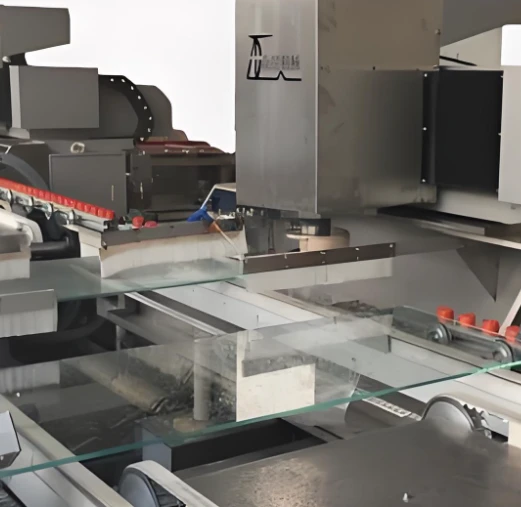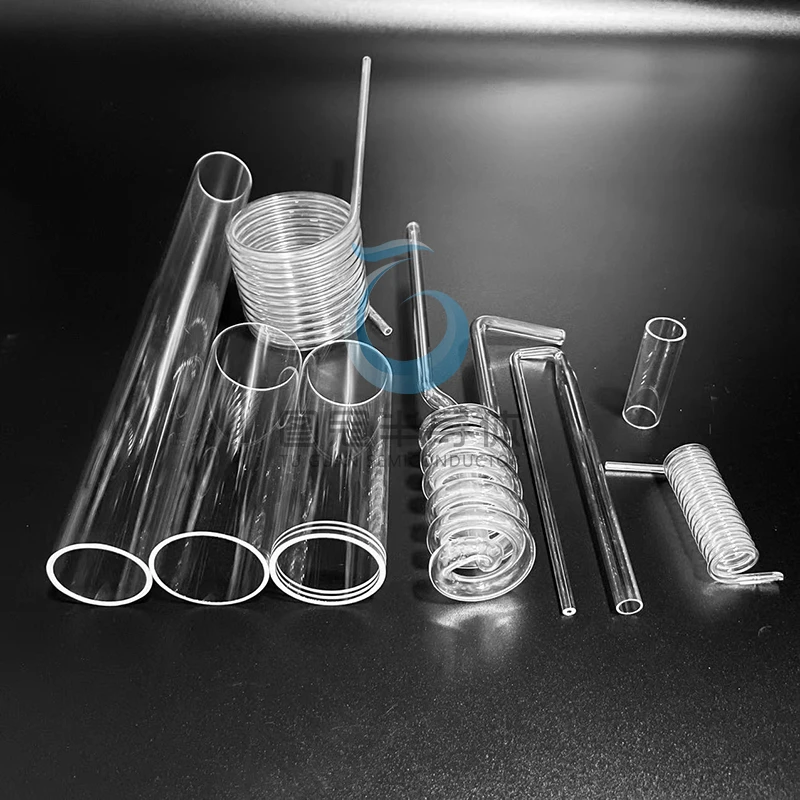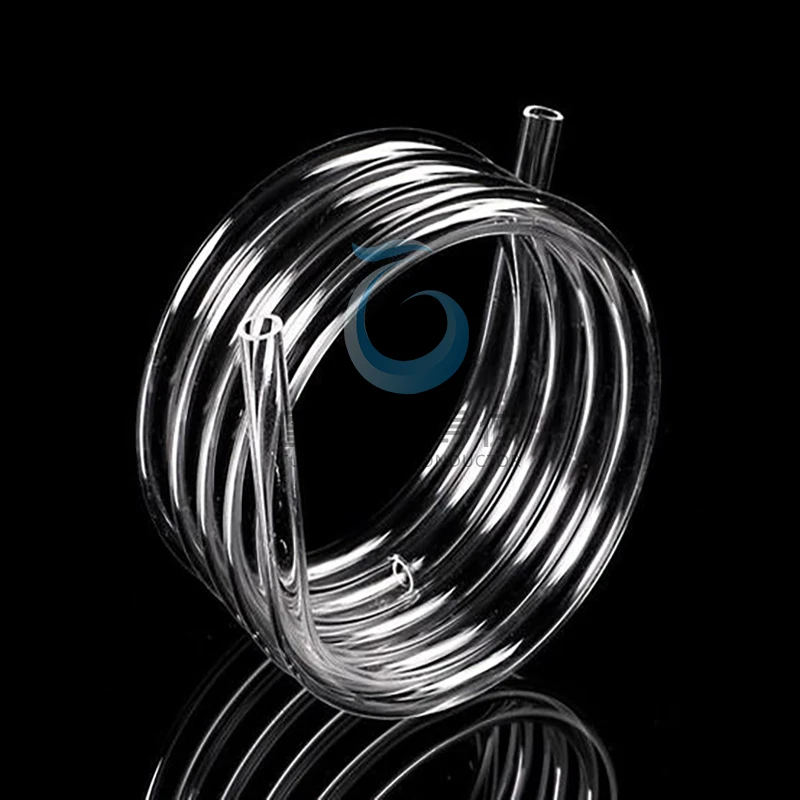Call us: +86 0518-87284110
Fused Quartz Spiral Tubes & Heat Exchanger Coils
Fused quartz spiral tubes and coiled tubing engineered for efficient heat exchange, cooling/heating, and reactions in semiconductor, chemical, and laboratory systems. Fabricated from high-purity fused silica with smooth flame-fused transitions, these coils provide excellent chemical inertness, thermal stability, and precise, clean fluid control in high-temperature and corrosive environments.
What to Provide for a Quote
- Drawing (PDF/STEP) or key dimensions: tube OD/ID, coil diameter, number of turns, coil pitch, straight-leg lengths
- Configuration: helical coil / serpentine / multi-pass / tube-in-tube; single or multiple parallel coils; manifold style
- Inlet/outlet orientation and connection type: ground joint, ball/socket, hose barb, KF/ISO/CF flange, or custom adapter
- Process conditions: gas/liquid, target flow rate and pressure drop, allowable pressure/vacuum, max temperature, chemistry
- Mounting/support: frames, brackets, spacers, tie points; clearance and footprint constraints
- Critical tolerances: bend radius, coil pitch uniformity, concentricity/runout, straightness of legs
- Quantity (prototype or batch), required inspection reports, cleanliness/packaging level
Key Specifications
- Material: High-purity fused quartz (SiO₂); material certificate available by request
- Geometries: Helical coils, serpentine coils, U-bends/multi-pass sections, tube-in-tube heat exchangers, manifolds with multiple outlets
- Dimensions: Per drawing (made-to-order); uniform wall thickness for thermal stability
- Construction: Precision bending and flame-fused joints; smooth, chip-free ends; optional stress-relief annealing
- Connections: Ground taper joints, ball/socket, hose barbs, KF/ISO/CF flanges, or custom interfaces
- Cleanliness: Ultrasonic/DI cleaning; Class-100 compatible packaging
- Service Note: Intended for vacuum or low positive pressure; any pressure rating is design- and test-dependent
Material Properties (Typical)
- Very low thermal expansion and good thermal-shock tolerance
- Excellent chemical resistance to most media (note: HF attacks quartz)
- Electrically insulating, low outgassing; optically clean inner surfaces to minimize contamination
Processing & Design Notes
- Select coil diameter, pitch, and number of turns to meet target heat-transfer area and pressure-drop limits
- Respect minimum bend radius for the selected OD/ID to avoid thinning and stress; add straight “landing” legs for connections
- Provide vents for blind cavities to prevent virtual leaks in vacuum duty
- Use spacers/support frames to maintain coil pitch and resist vibration or thermal growth
- For tube-in-tube designs, define flow direction (counter-/co-current), seal strategy, and leakage paths
- We can advise practical tolerances for pitch uniformity, concentricity/runout, and leg straightness based on geometry
Inspection & Testing
- Dimensional verification: OD/ID, coil diameter, pitch, number of turns, leg lengths and alignment; manifold port positions
- Optional tests: helium leak test (vacuum assemblies), flow/pressure-drop characterization, cleanliness report
- 100% visual inspection for chips, micro-cracks, inclusions, and surface defects
Applications
Cooling/heating coils in reactors and wet benches, condensers/evaporators, vapor generation and scrubbing, analytical and lab heat-exchange modules, high-purity chemical processing
Packaging & Storage
Rigid coil protectors and port caps; anti-static, vacuum-sealed packaging with shock-absorbent foam. Store dry (<40% RH) at 10–30 °C; keep away from HF-containing chemicals.
Notes
Custom configurations (hole patterns, coatings, or additional markings) available upon request.
Compliance certificates (RoHS, ISO 9001) provided with bulk orders.



